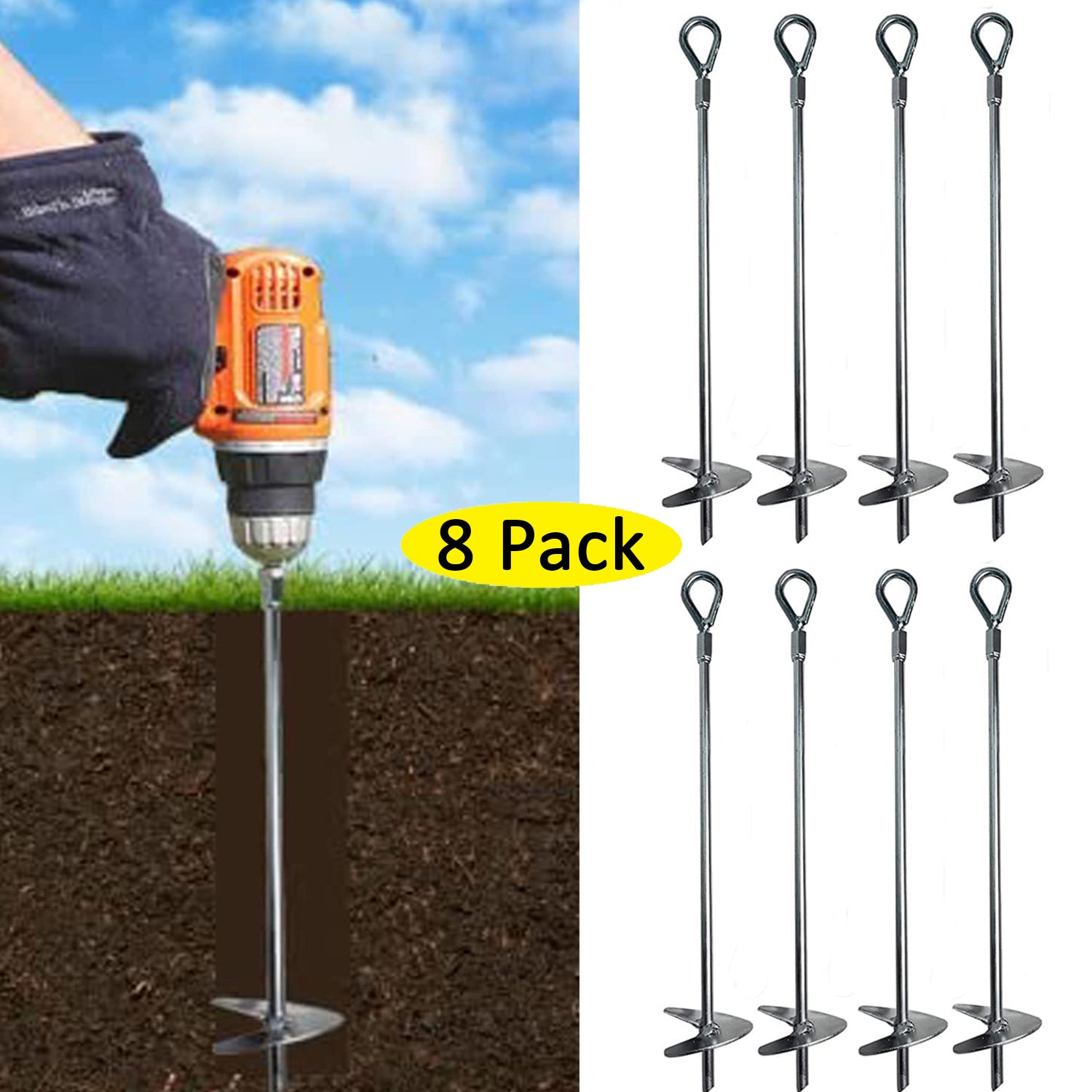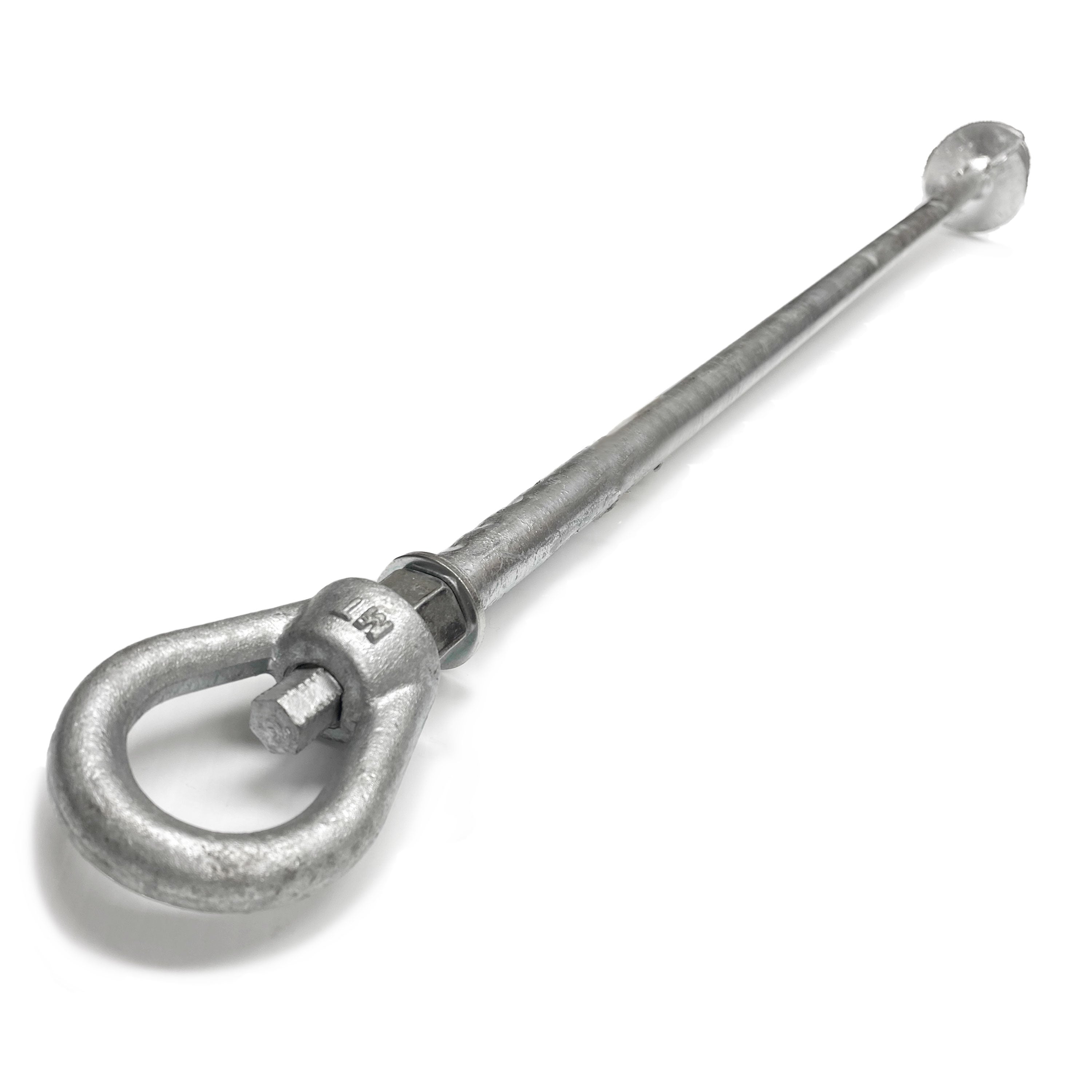Why You Need a Ground Anchor in Ensuring Property Protection
Why You Need a Ground Anchor in Ensuring Property Protection
Blog Article
Discover the Various Sorts Of Ground Support for Your Following Job
When embarking on a building and construction or landscaping project, understanding the different kinds of ground anchors readily available is critical to ensuring both stability and toughness (Ground Anchor). From auger anchors, which master diverse soil problems, to risk supports created for short-lived installments, the options are countless. Furthermore, concrete and screw anchors present special advantages in particular circumstances, while deadman anchors are tailored for applications needing resistance to lateral pressures. The selection of an appropriate anchor type can significantly affect the total success of your task, triggering more expedition into their corresponding benefits and applications.

Auger Anchors
Auger supports are a popular option in various building and construction and landscaping tasks due to their distinct layout and efficient anchoring abilities. These anchors contain a helical screw-like shaft that is driven right into the ground, enabling a protected and secure hold. The spiral design helps with easy setup and takes full advantage of resistance against lateral forces, making auger supports particularly reliable in applications such as fencing, temporary frameworks, and erosion control.
The installment procedure of auger supports is reasonably uncomplicated. They can be by hand or mechanically set up, relying on the size and called for deepness. This versatility enables their usage in diverse soil conditions, from sandy to clayey surfaces. Auger anchors can be quickly gotten rid of and recycled, which includes to their cost-effectiveness and sustainability.
Among the significant benefits of auger supports is their capacity to disperse loads equally throughout the bordering soil, minimizing the danger of soil disruption and decreasing environmental influence. Furthermore, they are less at risk to loosening or heaving with time contrasted to typical anchoring methods. Auger supports are a superb selection for projects requiring resilient and trustworthy anchoring options.

Risk Anchors
When it involves securing structures in a range of outdoor applications, risk anchors supply a reputable and straightforward service. These anchors are generally created from sturdy products such as steel or light weight aluminum, developed to stand up to environmental anxieties while supplying optimum security. Their easy style permits quick setup, making them a suitable option for short-term or long-term anchoring demands.
Risk supports are especially valuable in safeguarding outdoors tents, canopies, and various other light-weight structures versus wind and weather condition. They function by being driven into the ground at an angle, developing a strong hold that withstands pull-out forces - Ground Anchor. The performance of stake supports relies on numerous aspects, consisting of soil type, wetness content, and the angle of setup
For included safety and security, numerous stake supports feature attachment factors for ropes or straps, enabling stress changes as essential. In applications such as landscape design or building, they can efficiently support tools or frameworks on uneven surface. On the whole, risk supports provide a economical and versatile remedy for safeguarding various outdoor installments, making them a favored option for contractors and DIY fanatics alike.
Concrete Anchors
Concrete supports supply a durable solution for safeguarding frameworks to concrete surface areas, making sure stability and safety in different applications. These supports are necessary for projects varying from household building and constructions to large commercial installments. They are available in various types, including development anchors, adhesive supports, and undercut supports, each created for specific tons requirements and ecological conditions.
When set up,Expansion supports rely on mechanical systems to grip the concrete. They are optimal for medium to sturdy applications. Sticky supports utilize high-strength epoxy or material to bond the support to the concrete, using exceptional load-bearing capabilities, specifically in split concrete circumstances. Undercut go to my blog supports create a special shape within the concrete, providing remarkable holding power, specifically in applications where tensile tons prevail.
Choosing the proper concrete support entails taking into consideration aspects such as the weight of the lots, the problem of the concrete, and ecological conditions. Proper installation strategies are crucial to make sure optimal efficiency and integrity. When performed properly, concrete supports dramatically boost the architectural honesty of different jobs, making them crucial in modern construction techniques. Comprehending the certain requirements of your project will certainly aid in choosing the right kind of concrete anchor for the task.
Screw Anchors

Screw anchors are a versatile attaching service that can be successfully employed in a selection of applications where conventional concrete anchors might not suffice. These supports contain a helical style that permits them to be conveniently driven right into the ground, making them ideal for use in dirt and various other substratums. Their distinct framework offers excellent holding power and resistance to pull-out forces, making them appropriate for many jobs, from landscaping to structural support.
Among the main benefits of screw supports is their simplicity of installation. They call for minimal devices and can usually be installed without the requirement for excavation, which conserves both time and labor expenses. In addition, screw supports can be removed and reused, supplying a lasting solution for momentary applications.
Screw anchors are particularly beneficial in locations where soil problems are challenging, such as loosened or sandy dirts. Their capability to be mounted at varying midsts enables modification based upon specific project needs. On the whole, screw supports give a reliable and trustworthy anchoring pop over to this site technique, making them an outstanding choice for service providers and engineers looking for reliable remedies for their projects.
Deadman Anchors
Deadman supports serve as a durable service for supporting structures in difficult problems, especially where traditional securing methods might fail. These supports are composed of large, hefty objects hidden underground, which create resistance versus lateral forces. The style usually involves a straight part, such as a block of concrete or a metal plate, buried in the dirt, to which cords or bands are connected.
The performance of deadman supports hinges on their capability to disperse tons over a bigger location, decreasing the risk of failing in unstable soil conditions. They are particularly advantageous in applications such as retaining walls, momentary structures, and slope stabilization, where soil movement can compromise the integrity of the structure.
Setup of deadman anchors calls for careful preparation to ensure that site they are positioned at the appropriate depth and alignment, optimizing their load-bearing capacity. While they may require even more labor and material than lightweight supports, their integrity in unfavorable conditions makes them invaluable for lasting projects. Deadman anchors are functional and can be adapted to different applications, making them a go-to choice for designers dealing with unique obstacles in their tasks.
Conclusion
Auger anchors stand out in diverse dirt conditions, while stake supports fit short-term applications. For concrete surfaces, growth and adhesive anchors give trustworthy choices, and screw anchors supply adaptability in tough surfaces.
Additionally, concrete and screw supports present special advantages in certain situations, while deadman supports are tailored for applications calling for resistance to lateral forces - Ground Anchor.Auger supports are a prominent option in various building and construction and landscaping tasks due to their distinct layout and effective anchoring capacities. They come in various types, consisting of expansion anchors, glue supports, and undercut anchors, each developed for particular load demands and ecological problems
Sticky supports utilize high-strength epoxy or material to bond the anchor to the concrete, using exceptional load-bearing abilities, especially in split concrete circumstances. Overall, screw supports supply a efficient and trusted securing approach, making them an exceptional choice for professionals and designers looking for efficient remedies for their projects.
Report this page